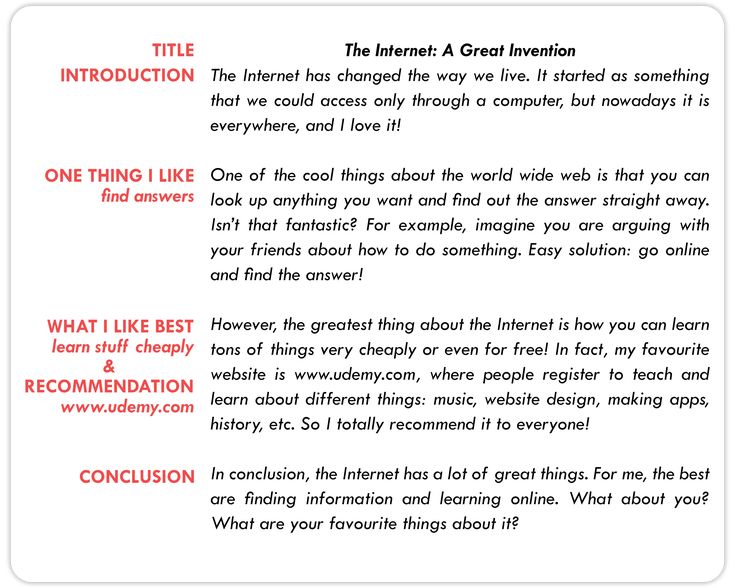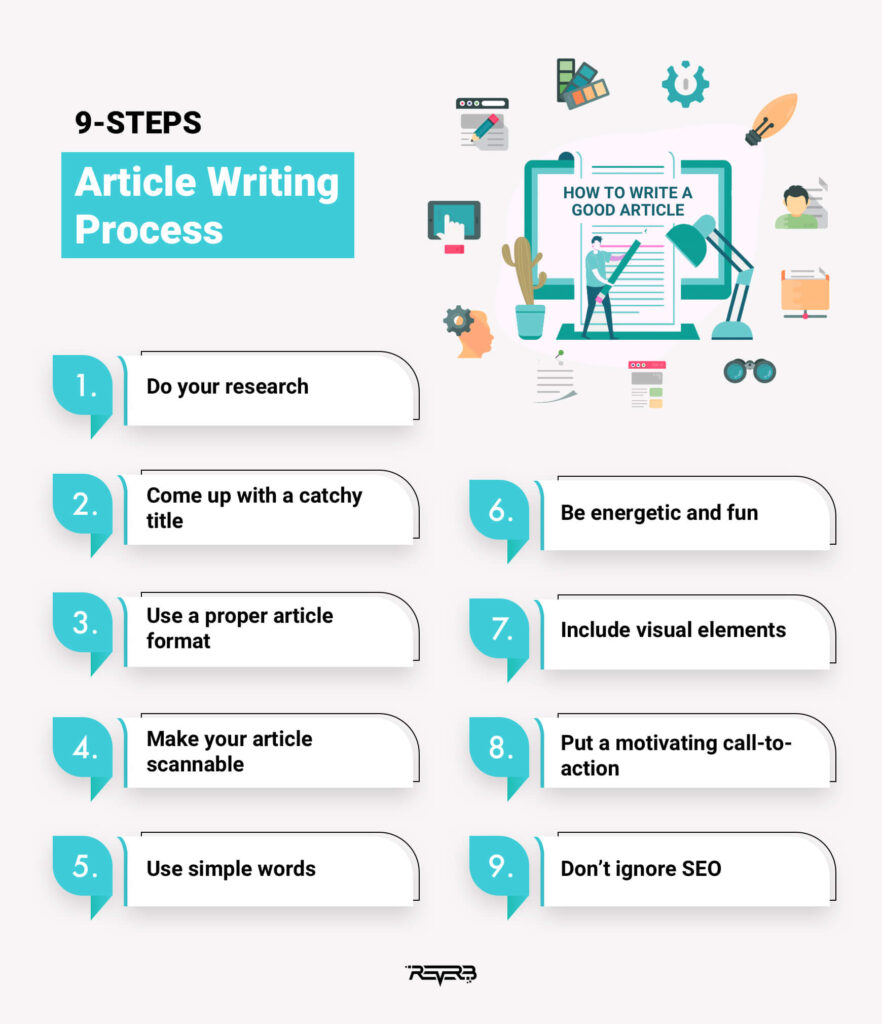How to Write an Article: A Step-by-Step Guide with Article Writing Format and Examples

An article is a piece of writing that you might have come across in newspapers, magazines, or websites. Article writing might seem to be a difficult process. However, with a clear structure and following the clear steps, you can write an engaging and informative article. In this blog, we will go through the steps of writing an effective article with examples.
What Is an Article?
An article is a piece of writing that contains information on a specific topic. These informative pieces of content are seen in newspapers, magazines, websites, journals, and blogs.
The article has a clear format of writing. It begins with the title, followed by the introduction, body, and concludes with conclusion. It is written to inform, persuade, or entertain the audience. And according to the audience, you manage the tone and style of the article. Article writing is a crucial skill that helps you convey your ideas clearly.
Looking to Scale Your Brand and Branding Identity?
Whatever your Branding needs may be — whether it’s a Website, Performance Marketing, SEO, Branding, or Communication Strategy — we have the perfect solution for you.
Contact UsThere are mainly four types of articles,
Expository Articles
The aim of these articles is to explain a topic in a logical manner. These kinds of articles include facts, evidence, and they use a simple and straightforward language. The examples of expository articles are how-to guides, educational blogs, and newspaper reports.
Persuasive articles
These kinds of articles persuade the reader to take a specific action. These contain logical arguments, emotional appeal, and evidence. In persuasive writing, you try to understand the reader’s problem and try to resolve it through your article.
Narrative writing
Narrative writing tells a story. They are often written in first-person point of view, and these are often descriptive and use an engaging tone. Narrative writings are a great way to engage the readers and build a connection with them.
Descriptive writing
Descriptive writing describes a thing in detail, including its benefits and features.
Also Read: Importance of Performance Marketing for Small Businesses in Kerala
Standard Article Writing Format
An article has a structured format, and it should be followed to write an impactful article. A standard article writing format consists of four main sections. The title, introduction, body, and conclusion. Let’s look at how to organize them effectively.
Title or heading
The title is the first thing that the readers see in your article. So it should be clear and concise. Try to make the title catchy and relevant. The title includes the subject of the article. For example, ‘The impact of social media on youth’.
Introduction
The introduction is the part that follows the title. It should contain the gist of the topic that is about to be discussed in the article. Here, you should be able to hook the reader. As the name suggests, you will be introducing the main idea of the article. In order to grab the audience’s attention, you can include a fact, a question, or a bold statement in the introduction.
Body
The body is the heart of the article. It contains the main content. It is usually divided into two or three sections with subheadings. Each paragraph should convey an idea supported by examples or data. Make sure not to make the paragraphs too lengthy, or else the readers would find it difficult to read through. Make it short so that you can engage the readers throughout the content.
Conclusion
It is the final part of the article where you summarize the key points of the article. You can end the article with an opinion, a call to action, or a recommendation. You can either add a title to this section or you can simply name it ‘Conclusion’. As this is the final part of the article, try to make it memorable or thought-provoking.
Also Read: How To Use the Instagram Appeal Form for Banned Profiles
“When I began thinking of writing an article as something that could be described by one definite task that it should perform, I altered the style in which I write articles. I was in the habit of writing articles that relied on over-sized, general concepts or highly technical diction, in the hope that they will be noticed by the reader. Then I found that easier and more applicable writing is much effective. A concise, concise message maintains the interest of the readers and makes them engage in actual sense. Now, when I begin working on an article, I dedicate the initial 20 % to research and definition of what very specific issue I am addressing to the reader. The other 80 % is on how to solve that issue in the most transparent and simple manner”
Todd Stephenson, Co-founder, Roof Quotes
How to Write an Article: Step-by-Step Process
Here is a step-by-step guide to writing a well-structured article. Choose a topic and know your audience. Pick a relevant topic that your readers would find interesting. According to your audience, you must manage the tone of your writing. If you are writing for students, professionals, or general readers, match your language according to their expectations.

Steps of Writing an Article – Image Source: Collegevidya
Research the topic thoroughly
Gather information from various reputable sources like books, websites, interviews, or statistics. Make sure your content is up-to-date. Thorough research will ensure that your article is credible and authoritative.
Create an outline
Before writing the article, it is better that you create a content map of the article. Create an outline with the main points like Heading, Introduction, Body, and Conclusion. Also, note down what to include in each of the sections. This can save time and help with writing an article clearly. When you are stuck while writing, this outline would save you time. It also ensures that you cover all the important aspects of the topic.
Write a strong introduction
The introduction should start with a hook such as a question, a quote, or a fact. The introduction should include a gist of the topic that you’re about to write. It should engage the reader, and for this, you have to maintain a clear tone. The reader must be prompted to read the entire article after going through the introduction. It should be interesting and engaging.
Develop the body paragraph
Each paragraph of the body should focus on one main idea, and you can add examples, facts, or arguments to support these ideas. You can use subheadings to break down the content and make it easier to read. Making the paragraphs short would make it easier for people to read through. A lengthy paragraph would not easily grab the attention of the reader, and they would find it tiring to read through. Also, make sure that each point logically connects with the next in order to maintain the flow.
Write a clear conclusion
The conclusion must include a summary of the main points of your article. It is ideal to keep the conclusion concise. In the conclusion, you can share your opinion, give a recommendation, or end with a call to action. New information should not be added in the conclusion.
Proofread and edit
Finally, review your article to correct any factual or grammatical mistakes. You can also use tools such as Grammarly to correct the grammar, spelling, punctuation, and mistakes in sentence structure.
"The largest change in my approach to writing articles has been the emphasis on intent rather than information. It is tempting to fall into the pit of repeating the facts and data without thinking about what the reader really wants. The change occurred when I began to ask myself not what I could say but what I want my reader to take away. Such an attitude will make the content meaningful and useful, rather than informative."
Khris Steven, Content marketer, SEO and Automation expert / Founder, KhrisDigital Marketing
Article Writing Examples

Article Writing Examples– Image Source: Examples.com
Here is an example of an article that has a clear title, introduction, body, and conclusion.
Example 1
Informative article
Title: The benefits of reading books daily.
Introduction: Reading enriches our minds and nurtures our souls. In a digitally dominant world, we are short on attention span, and reading has become a tedious task for many. However, reading a book can give you peace and clarity in life. It would help in your personal growth immensely. Reading a book every day would have lasting effects on your mental and emotional well-being, rather than scrolling through your phone every day.
Body: Reading can have a direct effect on improving your vocabulary and language skills. The more you read, the more words and expressions you get familiar with. Reading takes you to another world, which helps your mind unwind and relax. It also helps you concentrate for a long time. This is a trait that is diminishing day by day in this digital age. Continuous scrolling has reduced the attention span of people. Reading enhances the imagination and critical thinking capacity. It is a valuable thing to do for both students and professionals alike.
Conclusion: Just 10 minutes of reading daily can have a powerful impact on your life. It sharpens your mind, relieves stress, and builds knowledge over time. Make reading a daily habit, and you will start to notice small yet meaningful changes in your life.
“I stopped trying to write a perfect article from the start, and instead starting treating each one as a ‘minimum viable product’. Knowing that search engines value pages that grow and expand over time shifted our perspective. Our goal now is to get a rough version of the complete argument or concept out and published ASAP. Content with natural virality rises to the top, and we then start fleshing it out into a more full piece.”
Maria Matarelli, CEO, Formula Ink
Tips for effective article writing

Article Writing Process- Image Source: RAFeverbico
An ideal content should be easy to read, engaging, and provide value to your audience. Here are a few essential tips for effective article writing.
- Use active voice – Active voice makes your writing more direct and clear. This way your sentences would be easy to read.
- Stick to the word count – Sticking to the word count helps to keep your content concise. An overly lengthy article can exhaust the readers, or making it too short might feel incomplete.
- Avoid jargon and complex vocabulary – The terms used should be unambiguous. This way, your audience can easily access what you are writing. Using too much jargon can confuse the readers.
- Keep paragraphs short and scannable – Short paragraphs improve readability. Aim for 2-4 sentences per paragraph. Use subheadings or bullet points to grab the reader’s attention and make it look presentable. A large paragraph can make it difficult for the reader to attentively engage with the article.
Conclusion
Article writing is no Herculean task. If you follow a clear and logical process, you can create an engaging and informative piece of writing. Always remember to stick to the writing pattern with the title, introduction, body, and conclusion. Use simple and clear language and avoid jargon. Finally, proofread your article for grammatical and factual errors.
dExito Branding is an ROI-focused Performance Marketing Agency in Kerala offering result-driven digital marketing solutions to help businesses grow online. We are also an expert SEO Company in Kerala, providing strategic SEO services to boost your brand visibility and search engine rankings.

Salmanul Faris, Founder of dExito Branding, is a seasoned Performance Marketing Expert with over 8 years of experience in Google Ads and Meta Ads. He specializes in helping businesses across India and the GCC achieve measurable growth through data-driven marketing strategies. Amidst his dynamic role at dExito, he shares insights on the latest trends in digital marketing and performance marketing, helping brands stay ahead in the competitive digital landscape